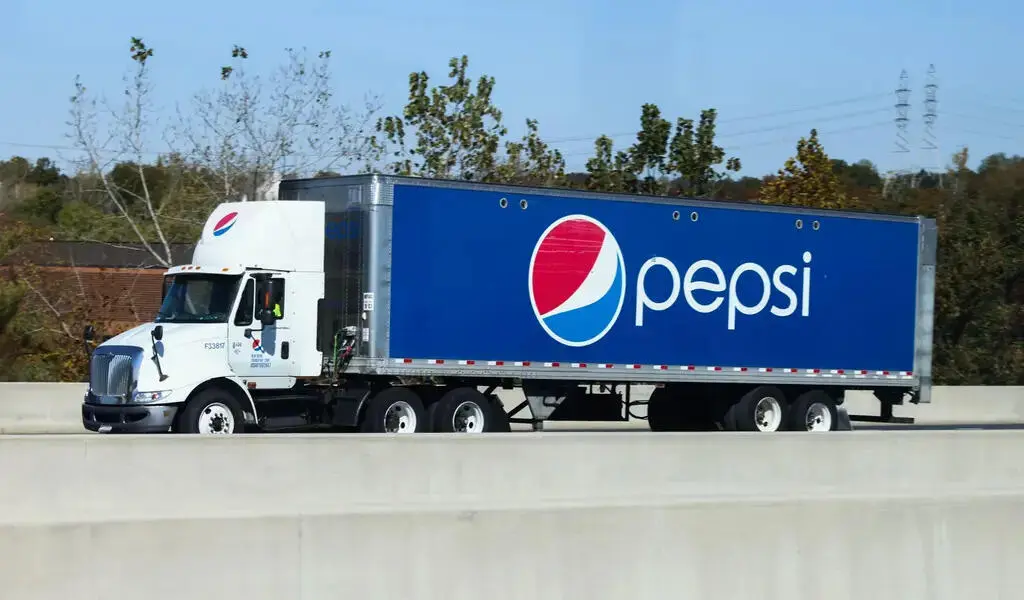Oscars 2022: Full Winners List

Oscars 2022: Hollywood’s biggest night has officially ended with plenty of historic firsts.
“CODA” won best picture for its story of a singer trying to balance her ambitions and family. The film was a milestone in the fields of Deaf representation and filmmaking. The Eyes of Tammy Faye won Jessica Chastain her first Oscar for best actress in a leading role. King Richard won Will Smith his first Oscar as best actor in a leading role.
“West Side Story” actress Arianna DeBose won best actress in a supporting role and “The Power of the Dog” director Jane Campion won the best director.
Must Read Related New: Will Smith Slaps Chris Rock at the Oscars Over joke about Jada Pinkett Smith
Here is the complete list of Oscars 2022 winners and nominees:
Best actress in a supporting role
Jessie Buckley, “The Lost Daughter”
WINNER: Ariana DeBose, “West Side Story”
Judi Dench, “Belfast”
Kirsten Dunst, “The Power of the Dog”
Aunjanue Ellis, “King Richard”
Best sound
“Belfast”
WINNER: “Dune”
“No Time to Die”
“The Power of the Dog”
“West Side Story”
Best cinematography
WINNER: Greig Fraser, “Dune”
Dan Laustsen, “Nightmare Alley”
Ari Wegner, “The Power of the Dog”
Bruno Delbonnel, “The Tragedy of Macbeth”
Janusz Kaminski, “West Side Story”
Best documentary (short subject)
“Audible”
“Lead Me Home”
WINNER: “The Queen of Basketball”
“Three Songs for Benazir”
“When We Were Bullies”
Best visual effects
WINNER: “Dune”
“Free Guy”
“No Time to Die”
“Shang-Chi and the Legend of the Ten Rings”
“Spider-Man: No Way Home”
Best animated feature film
WINNER: “Encanto”
“Flee”
“Luca”
“The Mitchells vs. the Machines”
“Raya and the Last Dragon”
Best short film (animated)
“Affairs of the Art”
“Bestia”
“Boxballet”
“Robin Robin”
WINNER: “The Windshield Wiper”
Best actor in a supporting role
Ciarán Hinds, “Belfast”
WINNER: Troy Kotsur, “CODA”
Jesse Plemons, “The Power of the Dog”
J.K. Simmons, “Being the Ricardos”
Kodi Smit-McPhee, “The Power of the Dog”
Best international feature film
WINNER: “Drive My Car,” Japan
“Flee,” Denmark
“The Hand of God,” Italy
“Lunana: A Yak in the Classroom,” Bhutan
“The Worst Person in the World,” Norway
Best short film (live action)
“Ala Kachuu — Take and Run”
“The Dress”
WINNER: “The Long Goodbye”
“On My Mind”
“Please Hold”
Best costume design
WINNER: Jenny Beavan, “Cruella”
Massimo Cantini Parrini and Jacqueline Durran, “Cyrano”
Jacqueline West and Robert Morgan, “Dune”
Luis Sequeira, “Nightmare Alley”
Paul Tazewell, “West Side Story”
Best writing (original screenplay)
WINNER: Kenneth Branagh, “Belfast”
Adam McKay (Screenplay), Adam McKay & David Sirota (Story), “Don’t Look Up”
Zach Baylin, “King Richard”
Paul Thomas Anderson, “Licorice Pizza”

News
Trudeau’s Gun Grab Could Cost Taxpayers a Whopping $7 Billion

A recent report indicates that since Trudeau’s announcement of his gun buyback program four years ago, almost none of the banned firearms have been surrendered.
The federal government plans to purchase 2,063 firearm models from retailers following the enactment of Bill C-21, which amends various Acts and introduces certain consequential changes related to firearms. It was granted royal assent on December 15 of last year.
This ban immediately criminalized the actions of federally-licensed firearms owners regarding the purchase, sale, transportation, importation, exportation, or use of hundreds of thousands of rifles and shotguns that were previously legal.
The gun ban focused on what it termed ‘assault-style weapons,’ which are, in reality, traditional semi-automatic rifles and shotguns that have enjoyed popularity among hunters and sport shooters for over a century.
In May 2020, the federal government enacted an Order-in-Council that prohibited 1,500 types of “assault-style” firearms and outlined specific components of the newly banned firearms. Property owners must adhere to the law by October 2023.
Trudeau’s Buyback Hasn’t Happened
“In the announcement regarding the ban, the prime minister stated that the government would seize the prohibited firearms, assuring that their lawful owners would be ‘grandfathered’ or compensated fairly.” “That hasn’t happened,” criminologist Gary Mauser told Rebel News.
Mauser projected expenses ranging from $2.6 billion to $6.7 billion. The figure reflects the compensation costs amounting to $756 million, as outlined by the Parliamentary Budget Office (PBO).
“The projected expenses for gathering the illegal firearms are estimated to range from $1.6 billion to $7 billion.” “This range estimate increases to between $2.647 billion and $7 billion when compensation costs to owners are factored in,” Mauser stated.
Figures requested by Conservative MP Shannon Stubbs concerning firearms prohibited due to the May 1, 2020 Order In Council reveal that $72 million has been allocated to the firearm “buyback” program, yet not a single firearm has been confiscated to date.
In a recent revelation, Public Safety Canada disclosed that the federal government allocated a staggering $41,094,556, as prompted by an order paper question from Conservative Senator Don Plett last September, yet yielded no tangible outcomes.
An internal memo from late 2019 revealed that the Liberals projected their politically motivated harassment would incur a cost of $1.8 billion.
Enforcement efforts Questioned
By December 2023, estimates from TheGunBlog.ca indicate that the Liberals and RCMP had incurred or were responsible for approximately $30 million in personnel expenses related to the enforcement efforts. The union representing the police service previously stated that the effort to confiscate firearms is a “misdirected effort” aimed at ensuring public safety.
“This action diverts crucial personnel, resources, and funding from tackling the more pressing and escalating issue of criminal use of illegal firearms,” stated the National Police Federation (NPF).
The Canadian Sporting Arms & Ammunition Association (CSAAA), representing firearms retailers, has stated it will have “zero involvement” in the confiscation of these firearms. Even Canada Post held back from providing assistance due to safety concerns.
The consultant previously assessed that retailers are sitting on almost $1 billion worth of inventory that cannot be sold or returned to suppliers because of the Order-In-Council.
“Despite the ongoing confusion surrounding the ban, after four years, we ought to be able to address one crucial question.” Has the prohibition enhanced safety for Canadians? Mauser asks.
Illegally Obtained Firearms are the Problem
Statistics Canada reports a 10% increase in firearm-related violent crime between 2020 and 2022, rising from 12,614 incidents to 13,937 incidents. In that timeframe, the incidence of firearm-related violent crime increased from 33.7 incidents per 100,000 population in 2021 to 36.7 incidents the subsequent year.
“This marks the highest rate documented since the collection of comparable data began in 2009,” the criminologist explains.
Supplementary DataData indicates that firearm homicides have risen since 2020. “The issue lies not with lawfully-held firearms,” Mauser stated.
Firearms that have been banned under the Order-in-Council continue to be securely stored in the safes of their lawful owners. The individuals underwent a thorough vetting process by the RCMP and are subject to nightly monitoring to ensure there are no infractions that could pose a risk to public safety.
“The firearms involved in homicides were seldom legally owned weapons wielded by their rightful owners,” Mauser continues. The number of offenses linked to organized crime has surged from 4,810 in 2016 to a staggering 13,056 in 2020.
“If those in power … aim to diminish crime and enhance public safety, they ought to implement strategies that effectively focus on offenders and utilize our limited tax resources judiciously to reach these objectives,” he stated.
Related News:
Millennials in Canada Have Turned their Backs on Justin Trudeau
Millennials in Canada Have Turned their Backs on Justin Trudeau
World
Russian Arms Dealer Viktor Bout Back in Business After Biden Prisoner Exchange

Viktor Bout, the infamous Russian arms dealer who was exchanged two years ago for Brittney Griner by President Biden, has reportedly returned to arms trading, as detailed in a report by the Wall Street Journal.
The Wall Street Journal has revealed that Vikto Bout, infamously dubbed the “merchant of death,” is seeking to facilitate the sale of small arms to the Houthis. A report indicates that Houthi representatives met with Bout in Moscow in August to discuss the acquisition of $10 million in automatic weapons.
Nonetheless, the anticipated arms deal remains unfulfilled, as indicated by the report.
Reports indicate that the weapons being discussed do not encompass larger systems such as anti-ship or anti-air missiles, which could represent a considerable risk to U.S. military operations in the area.
Requests for comment from the WSJ regarding Bout’s alleged involvement in the arms trade went unanswered by the Kremlin and Russia’s Ministry of Defense. Steve Zissou, an attorney who provided legal representation for Bout during his time in U.S. custody, refrained from commenting on the possibility of Bout’s meetings with the Houthis.

Viktor Bout, the notorious Russian arms dealer was exchanged for Brittney Griner – CNN Image
Viktor Bout released in 2022
Bout, who became affiliated with Russia’s Kremlin-loyal Liberal Democratic Party following his release in a prisoner swap in December 2022, has kept a low profile since his return.
Bout was taken into custody in Thailand in 2008 and subsequently extradited to the United States, where he faced conviction in 2012 on charges associated with arms trafficking, resulting in a 25-year prison sentence.
For almost twenty years, Bout stood out as one of the globe’s most notorious arms dealers, providing weaponry to unrecognized governments and insurgent factions throughout Africa, Asia, and South America. The activities he conducted served as the basis for the 2005 film Lord of War.
Even after his conviction and imprisonment, reports indicate that Bout’s network persisted in its operations, contributing to conflicts in some of the globe’s most perilous areas.
Related News:
Former US Marine Paul Whelan Released From Russian Prison
Business
PepsiCo Reduces Revenue Projections As North American Snacks And Key International Markets Underperform.

(VOR News) – In the third quarter of this year, Pepsi’s net income was $2.93 billion, which is equivalent to $2.13 per share. This was attributed to the company.
This is in stark contrast to net income of $3.09 billion, which is equivalent to $2.24 per share, during the same period in the previous year. The company’s earnings per share were $2.31 when expenses were excluded.
Net sales decreased by 0.6%, totaling $23.32 billion. Organic sales increased by 1.3% during the quarter when the effects of acquisitions, divestitures, and currency changes are excluded.
Pepsi’s beverage sales fell this quarter.
The most recent report indicates that the beverage and food sectors of the organization experienced a 2% decline in volume. Consumers of all income levels are demonstrating a change in their purchasing habits, as indicated by CEOs’ statements from the previous quarter.
Pepsi’s entire volume was adversely affected by the lackluster demand they encountered in North America. An increasing number of Americans are becoming more frugal, reducing the number of snacks they ingest, and reducing the number of times they purchase at convenience stores.
Furthermore, Laguarta observed that the increase in sales was partially attributed to the election that occurred in Mexico during the month of June.
The most significant decrease in volume was experienced by Quaker Foods North America, which was 13%. In December, the company announced its initial recall in response to a potential salmonella infection.
Due to the probability of an illness, the recall was extended in January. Pepsi officially closed a plant that was implicated in the recalls in June, despite the fact that manufacturing had already been halted.
Jamie Caulfield, the Chief Financial Officer of Pepsi and Laguarta, has indicated that the recalls are beginning to have a lessening effect.
Frito-Lay experienced a 1.5% decline in volume in North America. The company has been striving to improve the value it offers to consumers and the accessibility of its snack line, which includes SunChips, Cheetos, and Stacy’s pita chips, in the retail establishments where it is sold.
Despite the fact that the category as a whole has slowed down in comparison to the results of previous years, the level of activity within the division is progressively increasing.
Pepsi executives issued a statement in which they stated that “Salty and savory snacks have underperformed year-to-date after outperforming packaged food categories in previous years.”
Pepsi will spend more on Doritos and Tostitos in the fall and winter before football season.
The company is currently promoting incentive packets for Tostitos and Ruffles, which contain twenty percent more chips than the standard package.
Pepsi is expanding its product line in order to more effectively target individuals who are health-conscious. The business announced its intention to acquire Siete Foods for a total of $1.2 billion approximately one week ago. The restaurant serves Mexican-American cuisine, which is typically modified to meet the dietary needs of a diverse clientele.
The beverage segment of Pepsi in North America experienced a three percent decrease in volume. Despite the fact that the demand for energy drinks, such as Pepsi’s Rockstar, has decreased as a result of consumers visiting convenience stores, the sales of well-known brands such as Gatorade and Pepsi have seen an increase throughout the quarter.
Laguarta expressed his opinion to the analysts during the company’s conference call, asserting, “I am of the opinion that it is a component of the economic cycle that we are currently experiencing, and that it will reverse itself in the future, once consumers feel better.”
Additionally, it has been noted that the food and beverage markets of South Asia, the Middle East, Latin America, and Africa have experienced a decline in sales volume. The company cut its forecast for organic revenue for the entire year on Tuesday due to the business’s second consecutive quarter of lower-than-anticipated sales.
The company’s performance during the quarter was adversely affected by the Quaker Foods North America recalls, the decrease in demand in the United States, and the interruptions that occurred in specific international markets, as per the statements made by Chief Executive Officer Ramon Laguarta.
Pepsi has revised its forecast for organic sales in 2024, shifting from a 4% growth rate to a low single-digit growth rate. The company reiterated its expectation that the core constant currency profitability per share will increase by a minimum of 8% in comparison to the previous year.
The company’s shares declined by less than one percent during premarket trading. The following discrepancies between the company’s report and the projections of Wall Street were identified by LSEG in a survey of analysts:
SOURCE: CNBC
SEE ALSO:
Old National Bank And Infosys Broaden Their Strategic Partnership.
-

 News3 years ago
News3 years agoLet’s Know About Ultra High Net Worth Individual
-
Entertainment2 years ago
Mabelle Prior: The Voice of Hope, Resilience, and Diversity Inspiring Generations
-

 Health3 years ago
Health3 years agoHow Much Ivermectin Should You Take?
-

 Tech2 years ago
Tech2 years agoTop Forex Brokers of 2023: Reviews and Analysis for Successful Trading
-

 Lifestyles2 years ago
Lifestyles2 years agoAries Soulmate Signs
-

 Movies2 years ago
Movies2 years agoWhat Should I Do If Disney Plus Keeps Logging Me Out of TV?
-

 Health3 years ago
Health3 years agoCan I Buy Ivermectin Without A Prescription in the USA?
-

 Learning2 years ago
Learning2 years agoVirtual Numbers: What Are They For?